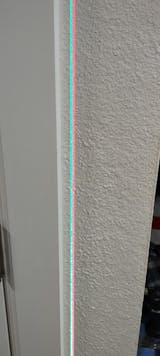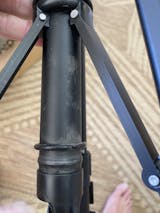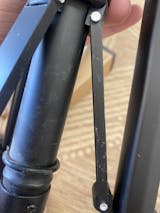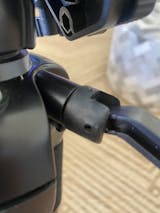Understanding Laser Levels: Types and Technologies
What is a 3D Laser Level?
A 3D laser level is a cutting-edge tool used to create level lines or points in three dimensions. It projects a laser beam that forms a horizontal and vertical plane, letting users check and align at any angle. Unlike basic levels that only show a single line, a 3D model gives a full 360-degree layout. This means you can do more with less moving of the device. You can check walls, floors, and ceilings all at once. This tool is perfect for tasks that need high precision, such as installing cabinets, tiles, or pipes. With a 3D laser level, users can ensure that every detail is perfectly aligned and level, saving time and reducing errors on the job.

Comparing 2D, 3D, and 4D Laser Levels: What's the Difference?
Laser levels come in various types, each designed for specific needs. The main difference lies in the lines they project.
- 2D Laser Levels: They cast one or two lines on a surface. These lines are either horizontal or vertical.
- 3D Laser Levels: These devices project three planes of light. So, they create a “crosshair” effect on all walls, floors, and ceilings.
- 4D Laser Levels: Similar to 3D, but they can rotate 360 degrees. This makes an entire room's layout visible at once.
When picking one, think about the job's needs. More ‘D’s mean more details, but also a higher cost. Keep in mind your project's scale and the level of precision you need.
Technology Behind Laser Levels: How Do They Work?
Laser levels use tech to cast beams on surfaces. These beams form 'levels' for building work. How? They have diodes that emit light. This light goes through optics to shape the beam. Some use pendulums with magnets for stability. Sensors in the device adjust the beam to be level. Most run on batteries, and some connect to apps for control. This is the base for 2D, 3D, and 4D laser levels.
Applications and Advantages of 3D Laser Levels
Using 3D Laser Levels in Construction and Surveying
3d laser levels have become a game changer in construction and surveying. They provide a precise, 360-degree view of a site, making it easier to measure and align various elements. Here’s how they’re used in these fields:
- Setting Foundations: By projecting a three-dimensional grid, workers can ensure the foundation is level and square from any angle.
- Installing Large Structures: 3D lasers assist in the accurate placement of beams and columns in large-scale projects.
- Aligning Pipes and Conduits: Perfect for plumbing and electrical work, these tools help with the horizontal and vertical alignment.
- Quality Control Checks: Throughout a build, they aid in monitoring the accuracy of ongoing work.
- Land Surveying: Land measurements become quicker and more accurate as 3D lasers capture complex contours and features.
The advantages of using 3d laser levels in these scenarios are numerous. They increase efficiency, reduce errors, and speed up project completion times. This makes 3D laser levels an indispensable tool for modern construction and surveying.
The Benefits of 3D Over Traditional Laser Levels
The evolution from traditional laser levels to 3d laser levels offers distinct advantages. The 3D laser levels provide a full room layout with a single setup, making them time-efficient. They cast lines on all planes, which aids in accuracy and reduces the chance for human error. Additionally, the visibility of 3D laser lines is usually better, offering improved readability in bright conditions. This means work can continue with less interruption. Furthermore, they often come with advanced features such as Bluetooth connectivity and compatibility with mobile apps, enhancing user experience and control. Lastly, 3D lasers can be invaluable for complex projects involving multiple angles and planes, as they ensure consistency throughout the project.
Innovative Projects Utilizing 3D Laser Levels
3d laser levels have transformed many fields with their precision and versatility. Let's explore a few examples of innovative projects that make use of 3D laser levels:
- Building Information Modeling (BIM): Architects and engineers use 3D laser levels to create detailed digital representations of buildings, ensuring that every angle is perfectly designed and executed.
- Historical Building Restoration: Conservators rely on 3D laser levels to accurately measure and recreate historical building features, preserving our architectural heritage.
- Large-scale Infrastructure: For projects like bridges and tunnels, 3D laser levels help maintain straightness, level, and pliability over long distances.
- Interior Design and Fit-Outs: By projecting precise lines onto surfaces, 3D laser levels aid designers and installers in aligning fixtures, lighting, and decor with exacting standards.
- Advanced Manufacturing: Factories use laser levels to set up complex machinery alignments, ensuring that all parts are perfectly positioned for optimal production.
Choosing the Right Laser Level for Your Project
Factors to Consider When Buying a Laser Level
When picking a laser level, keep these points in mind:
- Accuracy and Range: Look for levels offering precise measurements over your work area's size.
- Laser Visibility: Ensure the laser is visible in various lighting conditions.
- Durability: Choose a sturdy model that can withstand tough work sites.
- Battery Life: Longer battery life means less downtime on the job.
- User-Friendliness: Pick devices that are easy to set up and operate.
- Mounting Options: Check if the level comes with versatile mounting accessories.
- Price: Consider the cost and ensure it fits your budget.
- Warranty: Go for products with a warranty for peace of mind.
Picking the right model will boost your project's success.
Cross Line Laser Level Vs. 3D Laser Level: Which Is Best for You?
When picking a laser level, you might wonder if a cross line or a 3D laser level suits your needs. Cross line lasers project one or two visible lines onto surfaces. These lines can be horizontal, vertical, or both. They help in aligning tiles, cabinets, and fixtures. Cross line models are simple to use and cost less, making them ideal for home DIY tasks. 3d laser levels, on the other hand, emit lines in 360 degrees. This means you get a full room layout with just one setup. These levels are perfect for tasks that need precise measurements from the floor to the ceiling. For professional jobs in construction or surveying, 3D levels are the go-to. So, the best choice depends on the scale and detail of your project.
Top Picks: The Best 3D Laser Levels on the Market
Looking for the best 3d laser levels? Here's a list:
- Dewalt DW089LG: High precision, long battery life.
- Bosch GLL3-330CG: Bright green lines, Bluetooth connectivity.
- Huepar 603CG: Full layout with 3x360 lines, affordable price.
- Topcon RL-H5A: Best for outdoor use, robust design.
- Spectra Precision LT58G: Clear visibility, ceiling work ease.
All these options balance quality, features and cost. They meet various needs in both DIY and professional work.





